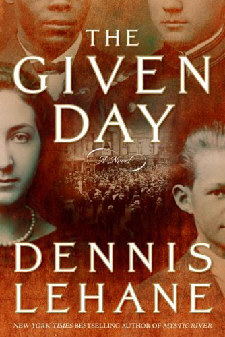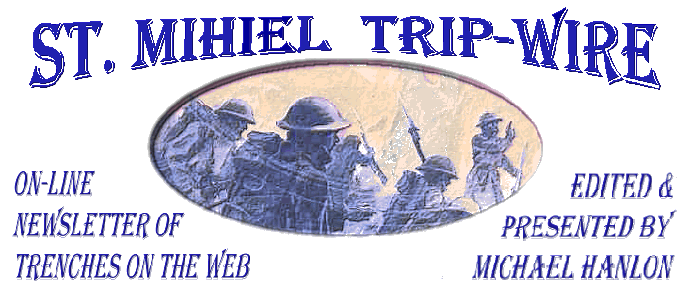
TRENCH REPORT: The day after Christmas your editor was driving down Interstate 580 in Albany, California. My plan was to get home and finish this issue of the Trip-Wire before I departed for Pasadena to attend the Rose Bowl on New Year's Day. But then someone--my guess is he was distracted by a Highway Patrol car on the opposite side flashing by on a high-speed run--swerved into my lane, bumped my Toyota Camry and sent me into a concrete center median that I hit head-on. I owe my life to my car and its airbag, which deployed as intended. The Camry was totalled, but I am astonishingly undamaged. I'm typing away here the morning after, free of any flashbacks about the accident, looking forward to more living, thinking about all the things I'm still going to be able to do with my life and with my family, friends and you readers. My only regret is losing that car, which was already my favorite even before yesterday. . .Several Trip-Wire readers, who will also be attending the Rose Bowl, have contacted me. If we can rendezvous somehow, I'll include a photo of the group in the next issue. . .Onward to 2009! MH
This Month's Internet Feature
First Hand Accounts
of Memorable Events
Assassination in Sarajevo
The Destruction of Louvain
First Gas Attack, Ypres 1915
The Great Zeppelin Raid: January 31, 1916
Revolution in Petrograd, March 1917
The Sinking of the Tuscania, 1918
Signing the Versailles Treaty
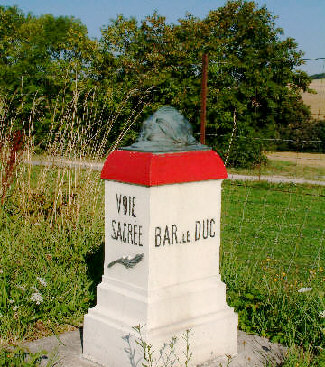
Voie Sacree Marker
Placed Every Kilometer Between Verdun and Bar le Duc
New at Our Own & Our Friends' Great War Websites
Click on Title or Icon to Access
|
At Great War Society Sites
Take a look at the progress being made on the Society's new website currently being upgraded by master web designer Nic Solberg. There you can join or renew membership on-line and access all of our content. You can also download the latest issue of the quarterly journal Relevance that was produced by your Trip-Wire team. MH
At the WFA-USA
|

Both Admiral Maximilian von Spee of the the German Navy and his namesake, the pocket battleship Admiral Graf Spee, perished in South American waters. The sailor died in the 1914 Battle of the Falklands, and the ship was scuttled in 1939 after being cornered by the Royal Navy at Montevideo.
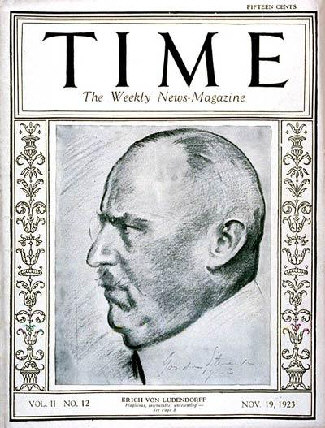 General Eric von Ludendorff, Time Cover 19 November 1923
(Had postwar political career, initially falling in with You-Know-Who and then splitting with him)

During the last days disorders have taken place in Petrograd, followed by force and assaults on the lives of soldiers and
members of the police. I forbid every kind of assembly in the streets. I warn the population of Petrograd that commands have been
issued and repeated to the troops to use their arms and not to stop short of anything in order to assure tranquility in the
capital.
Sergei Semenovich Khabalov, Lieutenant-General Commanding the Forces
in the Petrograd Military Area, February 25, 1917.
|

Detail, U.S. Navy Recruiting Poster
GREAT WAR 2009 EVENT CALENDAR
|
Western Front Association-U.S.A. &
The Great War Society
Combined 2009 Annual Seminar,
September 11 - 13, 2009
National World War I Museum
Kansas City, Missouri
The wide-ranging and compelling theme for the seminar combines the original seminar ideas for both organizations: "Technology, Treaties and the War: From 'Tin Hats' to Tanks and 'Top Hats' to Territories." Registration forms, fees and further information will be forthcoming. Check back here or at the organizations' websites for details. (link)
|
Western Front Association
U.S. Branch Chapter Meetings
Check for Your Region
Regularly Updated (details)
|
Great War Society Monthly Chapter Meetings
Berkeley, San Francisco and Palo Alto, CA
Regularly Updated (details)
|
Send additions/corrections:
Email Response
|
 Memorable Event
Memorable Event
|
Paris Peace Conference
Opens
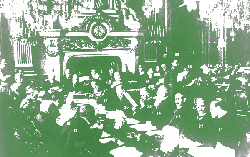
January 18, 1919
Click on Image to Learn More
|
|
News from Hungary
A permanent WWI exhibition has opened at the Budapest Military Museum. If you plan on visiting, the museum is located at the northwestern corner of Buda's Castle District.
And Some Matters from Down Under:
At the Australian War Memorial in Canberra Over the Front: the Great War in the Air is now a permanent exhibition featuring five restored Allied and German fighter planes plus a 12-minute film by Oscar-winning director Peter Jackson that captures the warbirds and pilots in action over the Western Front.
Australian service records from World War One are now on-line at:
http://www.h-net.org/announce/show.cgi?ID=165162

|
What do you do with senior commanding officer with a previously unblemished record who fails when his big moment comes? Or--in 1970s lingo--What happens after the "Peter Principle" kicks in? The career of Sir Ian Hamilton, Commander of the Mediterranean Expeditionary Force, who was responsible for the 1915 Gallipoli land campaign, is a case in point. First--to appease the political gods--the defeated commander must endure the ritual rack of governmental investigations until subsequent disasters provide distraction; then, to keep him from causing any further damage while avoiding sending discouraging signals to your remaining generals, you let him finish his military career in a safe sinecure. In Hamilton's case--he was highly esteemed by the King--an appointment of great prestige, Warden of the Tower of London, was granted him. After retirement from the army, he worked at restoring his reputation by serving as honorary colonel to several famous regiments and representing the veterans of both Scotland and South Africa. He died peacefully in 1947.
|
In next month's OVER THE TOP magazine, we will present the response of American literary masters to World War I, including a short story from Thomas Wolfe recommended to us by the late Professor Matthew Bruccoli.
|
Two Ways of Honoring Those Who Served
|
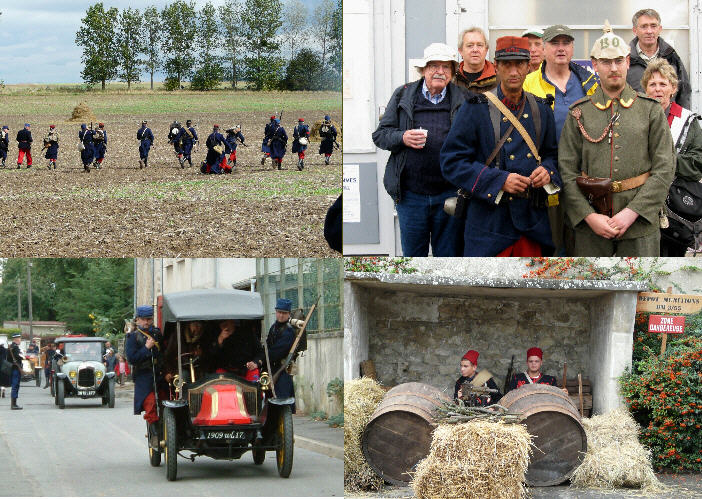
Attending WWI Commemorations: Last Fall, My Tour Group Was Able to Attend a Reenactment of the First Battle of the Marne at Villeroy, France, Where the Battle Prematurely Broke Out on 5 September 1914. Clockwise from Top Left: French Skirmishers Advance on a German Line in the Trees; Members of the Tour Group with Two Reenactors [Your Editor in the Yellow Jacket]; Algerian Troops Manning a Machine Gun; Paris Taxis Bring Reenforcements to the Marne Front.
|

Visiting World War I Museums: Last November 12th, Doran Cart, Curator of the National World War I Museum in Kansas City, Missouri and President of the WFA-USA, Hosted Former Secretary of State Colin Powell on a Tour of the Collection. In the Above Photo, They are Examining a Reclaimed Mine from the North Sea Mine Barrage.
|
|
|
Page Two
|
|
|
A Doughboy Treat
We received so many comments about last month's article on SPAM, which resulted from the WWI experience of James Hormel but was not available for the troops until the next war, that we thought you might want to try a real Doughboy favorite from the Great War. Coming in a future issue, Fried Mush -- Yum!

|
|
| Look Who's Editing Relevance!
|
Last month, we mentioned that our publishing team that has been producing the St. Mihiel Trip-Wire newsletter and the on-line WWI magazine Over the Top, has been asked to assume responsibility for the quarterly journal of The Great War Society, which is titled Relevance. We have completed our first effort. The Table of Contents is below. You can download the whole issue at: http://www.the-great-war-society.org/ If you like the journal's selection of articles on the broadest possible range of WWI topics, you can enlist in The Great War Society at the same page. You get your choice of the printed version of their journal or the downloadable version for a break in price.
Contents
- 2 About The Great War Society
- Our organization, membership, directors and thePresident's Message
- 4 News from the Western Front
- Three new monuments were dedicated recently in the Argonne Sector
- 5 Feature Article - Defeating the U-boat, Part One: "We Are Losing the War"
Jan S. Breemer
- A fresh look at the U-boat Campaign
- 20 Meet Our New President: Dana Lombardy
Interviewed by TGWS Marketing Director Diane Rooney
- Dana discusses his plans for organizational growth and preparing for the Great War's Centennial
- 23 Some of the Best of Our Website
- A diverse selection from the huge amount of information we provide on-line
- 29 Feature Article - Defeating the U-boat, Part Two: The Convoy System
Jan S. Breemer
- Coming to terms with an unprecedented threat
- 42 Trivia Challenge: Recognizing Your War Poets
- A new feature to test your First World War knowledge
- 43 Book and Film Reviews
- Major Internet articles from Len Shurtleff of Len's Bookshelf and Andrew Melomet at Andy's Nickelodeon
- 47 The 90th Anniversary of the Meuse-Argonne Offensive
- Map and key locations of America's greatest battlefield of the Great War
- 48 Documentary History
- President Woodrow Wilson announces the Armistice
|
|
Drawing on the Great War
I'll bet many of our readers who share my interest in the First World War have had the experience of a friend or family member ask you in bewilderment, "How can you be so interested in something so old and dreary and forgotten?" You have probably--like me--had mixed results when you try to explain to them that the results of the war are still with us, that the historical period is endlessly interesting and that it sheds light on many of the eternal challenges of the human experience. If you run into this problem in the future, you might share with them some of the insights and reflections I've discovered in just the last month by some of America's most insightful and, in some cases, controversial commentators and thinkers. I don't necessarily endorse any of the thoughts below, but I thought you would like to see how some of our best writers draw on the Great War for insights and examples to support their arguments. In each case, you can find the full article--or many others like them--with a little googling.
From: "How the Democrats Are Using the Armenians to Get Their Way in Iraq" (A criticism of a Congressional move to condemn Turkey for the WWI genocide in which the writer also describes what actually happened)
By Ralph Peters, NY Post, October 14, 2007
In the midst of the First World War, the Young Turks who had taken over the Ottoman Empire committed genocide against their Armenian subjects. At least a million Armenians were murdered - with nauseating cruelty - or died of abuse, heat, hunger and thirst.
The only reason any survived was that the Turks lacked the administrative skills and technologies to kill everyone. Not every captive fit into the burning churches. On the death marches across Anatolia into the Syrian desert, guards ran out of bullets. And even sadists grew weary of bayoneting children and clubbing old men to death.
From: "A Failure in Generalship" (A critique of U.S. Army preparations for the Iraq War)
By Lt. Col. Paul Yingling, U.S. Army, Armed Forces Journal, May 2007
The most tragic error a general can make is to assume without much reflection that wars of the future will look much like wars of the past. Following World War I, French generals committed this error, assuming that the next war would involve static battles dominated by firepower and fixed fortifications. Throughout the interwar years, French generals raised, equipped, armed and trained the French military to fight the last war. In stark contrast, German generals spent the interwar years attempting to break the stalemate created by firepower and fortifications. They developed a new form of war — the blitzkrieg — that integrated mobility, firepower and decentralized tactics. The German Army did not get this new form of warfare precisely right. After the 1939 conquest of Poland, the German Army undertook a critical self-examination of its operations. However, German generals did not get it too far wrong either, and in less than a year had adapted their tactics for the invasion of France.
From: "Does Patriotism Matter?"
By Thomas Sowell, Townhall.com, July 2, 2008
Perhaps nowhere was patriotism so down played or deplored than among intellectuals in the Western democracies in the two decades after the horrors of the First World War, fought under various nations' banners of patriotism. In France, after the First World War, the teachers' unions launched a systematic purge of textbooks, in order to promote internationalism and pacifism.
Books that depicted the courage and self-sacrifice of soldiers who had defended France against the German invaders were called "bellicose" books to be banished from the schools. Textbook publishers caved in to the power of the teachers' unions, rather than lose a large market for their books. History books were sharply revised to conform to internationalism and pacifism. The once epic story of the French soldiers' heroic defense against the German invaders at Verdun, despite the massive casualties suffered by the French, was now transformed into a story of horrible suffering by all soldiers at Verdun-- French and German alike.
In short, soldiers once depicted as national heroes were now depicted as victims-- and just like victims in other nations' armies. Children were bombarded with stories on the horrors of war. In some schools, children whose fathers had been killed during the war were asked to speak to the class and many of these children-- as well as some of their classmates and teachers-- broke down in tears. In Britain, Winston Churchill warned that a country "cannot avoid war by dilating upon its horrors." In France, Marshal Philippe Petain, the victor at Verdun, warned in 1934 that teachers were trying to "raise our sons in ignorance of or in contempt of the fatherland." But they were voices drowned out by the pacifist and internationalist rhetoric of the 1920s and 1930s.
Did it matter? Does patriotism matter?
France, where pacifism and internationalism were strongest, became a classic example of how much it can matter.
During the First World War, France fought on against the German invaders for four long years, despite having more of its soldiers killed than all the American soldiers killed in all the wars in the history of the United States, put together. But during the Second World War, France collapsed after just six weeks of fighting and surrendered to Nazi Germany. At the bitter moment of defeat the head of the French teachers' union was told, "You are partially responsible for the defeat."
From “Mein Buch” (Review of a book about Hitler's Personal Library)
By Anthony Grafton, The New Republic, December 24, 2008
On November 22, 1915, while serving as a message runner on the Western Front, Hitler bought a guide to the architecture of Berlin by the critic Max Osborn, a Jewish intellectual who covered the Western Front for the prestigious Vossische Zeitung while Hitler was stationed there, vividly recording the horror, and the increasing savagery, of the war. Ryback observes that "in November 1915, for a frontline corporal to pay four marks for a book on cultural treasures of Berlin, when cigarettes, schnapps, and women were readily available for more immediate and palpable distraction, can be seen as an act of aesthetic transcendence [On leave, Hitler would use the book as a guidebook while touring the capital]. . . In later life, of course, Hitler planned to transform the city into a monumental, stylistically coherent capital to be called Germania, and he and Speer realized parts of the plan in the Olympic Stadium and Chancery. Osborn, whose work was banned and who emigrated to America, presumably did not admire the direction in which Hitler took his rather conventional aesthetic nationalism. But the case seems clear: reading Osborn sharpened Hitler's sense of how to read Berlin--and very likely inspired him to abandon his earlier taste for architectural eclecticism. MH
|
A Visit to California's Aeroplane Collection
Reported by
Correspondent Jim "Trench Rat" Folger
Reader's of the magazine Over the Top are familiar with the California-based Aeroplane Collection of technology historian Javier Arango. In November I was privileged to be invited to visit the collection, which has approximately 20 flyable WWI aircraft, a mixture of original and very exact reproduction aircraft. The collection focuses on three notable notable design lines: Sopwith, Fokker and Nieuport.
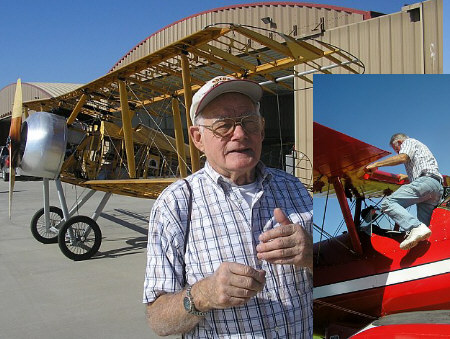 |
Our Faithful Correspondent with a Sopwith Snipe Taking Shape Behind Him. Insert: Faithful Correspondent Mounting the Cockpit of a Postwar Stinson Trainer For a Demonstration Flight |
 |
The Group Inspects an Airworthy Nieuport 10 |
This was one of the most memorable days of my life. I grew up in the 1930s reading adventure stories about these planes. Ever since I've been an enthusiast for WWI aircraft. This visit was a dream come true. Especially memorable was climbing in the cockpit, putting a helmet on, being strapped in and experiencing flying in the style of the Great War aviators.
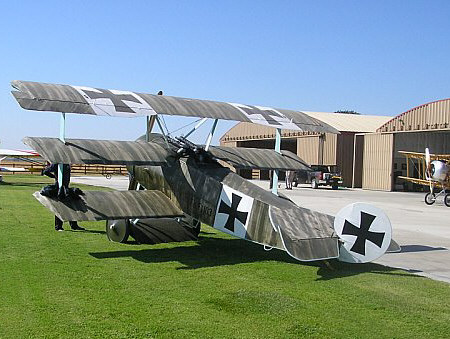 |
Fokker Dr.1 Triplane |
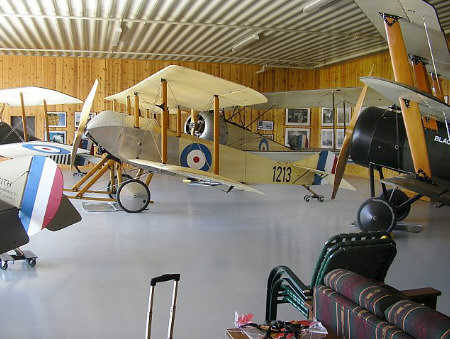 |
A Typical Hangar Interior, A Sopwith Tabloid in the Center |
|
|
Subscribe to Our On-Line Magazine
|
|

|
|
|
Page Three
|
|
|
2009 World War I Tours Led by
Trip-Wire Editor Mike Hanlon
Click on image to request a brochure from greatwar@earthlink.net
|
|
|
| Look Who Has a New Book Out!
|
Trip-Wire Columnist Christina Holstein
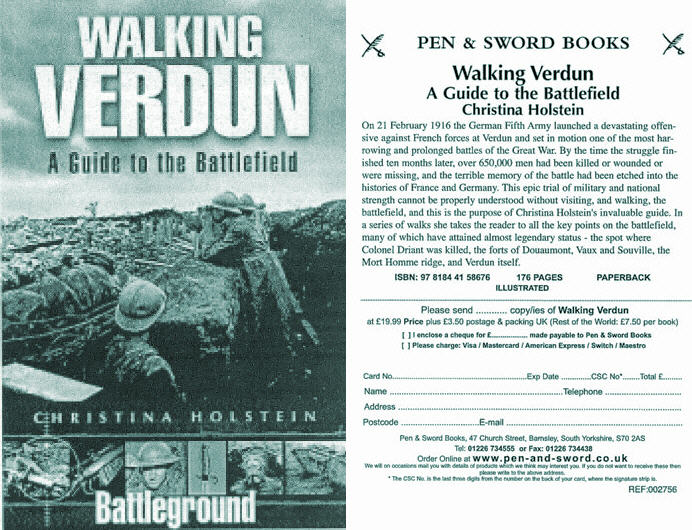
|
| What Was Wrong with Beatty's Ships?
|
“There seems to be something wrong with our bloody ships today,” said Admiral David Beatty on May 31, 1916.
This famous comment was provoked as Beatty was losing three of his battlecruisers, Indefatigable, Queen Mary and Invincible, in the opening of the Battle of Jutland. Many analyses of the battle assert these ships had major design flaws with their turrets and magazines. In British Battlecruisers, 1914-18, (Osprey, 2006), however, authors Lawrence Burr and Tony Bryan conclude other issues led to the loss of the ships.
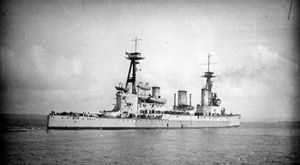
Battlecruiser HMS Indefatigable, Lost in Action at Jutland
Technological deficiencies of offensive systems including: the inadequate Dreyer fire-control system (except on Queen Mary), range finders inaccurate at long distances, the less stable qualities of the Royal Navy's cordite as compared to the German formula and poor-quality armor-piercing shells.
Operational and procedural matters, including: a lack of gunnery practice and the unsafe ammunition-handling practices that had been speeded-up by leaving cordite stacked in the turrets' working chambers and magazine doors left open.
Given the above problems, the authors conclude: "The problem with British battlecruisers at Jutland was that their crews were too eager to come to grips with the enemy."
|
 |
The Given Day
A Novel
Reviewed by Len Shurtleff
|
This sprawling novel is a romp through the ward politics and often violent streets of early 20th-century Boston's seething ethnic neighborhoods. From the Italian North End to Irish Southie, from the Brahmins of Beacon Hill to the Fenway ballpark, it is steeped in Boston culture and history. Lehane's work is also holds up a mirror to the ethnic, political and labor conflicts that rocked post-WWI America, in particular the Red Scare generated by the Russian Bolshevik revolution of 1917.
Most of all, however, this is a tale of the Boston Police Force and its largely "lace curtain" Irish hierarchy. The list of protagonists is led by fictional first-generation Irish-American cop Aiden "Danny" Coughlin, his father police captain Thomas Coughlin, his lawyer brother Connor and his godfather, the brutal police lieutenant Eddie McKenna. Thrown into the mix are real characters like Babe Ruth, then a Red Sox pitcher with untapped slugging potential, Governor Calvin "Silent Cal" Coolidge, a Vermont Republican in a Democratic city, ambitious Department of Justice lawyer John Edgar Hoover and James Michael Storrow, Boston power broker and former president of General Motors. Also prominent in the cast of characters is the local leadership of the NAACP and Luther Laurence, a fictional African-American transplant on the run from Tulsa racketeers.
The plot opens in the fall of 1918 with the World Series between Harry Frazee's victorious Red Sox and the Chicago Cubs, the return of the first Doughboys from France and the eruption of the deadly influenza pandemic. Woven throughout is seething discontent among overworked and underpaid Boston policemen, the postwar wave of labor and ethnic unrest, surging trade unionism, mounting -- almost irrational -- fears of shadowy Bolshevik plotting and very real anarchist bomb throwing. It climaxes in the mob violence surrounding the 1919 Boston police strike (which helped catapult Coolidge into the vice presidency) and ends with George Herman Ruth being sold by the infamous Harry Frazee to the New York Yankees.
This is an entertaining and even informative snapshot of an American city caught in the upheavals that followed the Great War brought to life in a novel all too reminiscent of actual events.
The Given Day, Dennis Lehane, William Morrow, 2008, 704 pages, map of Boston, illustrations, cast of characters, ISBN 978 0 688 16318 1, $27.95 cloth. The author also wrote Mystic River, another novel of the Boston Irish.
_________________________
For more on the Boston Police Strike of 1919 see City in Terror: 1919 - The Boston Police Strike, Francis Russell, Penguin, 1975. For details on the Red Scare see The World on Fire: 1919 and the Battle with Bolshevism, Dudley Reed, W. W. Norton, 2008 and Savage Peace: Hope and Fear in America, 1919, Ann Hagedorn, Simon & Schuster, 2007.
|
|
World War I Headlines
in the
21st Century
|
|
|
|
|
|









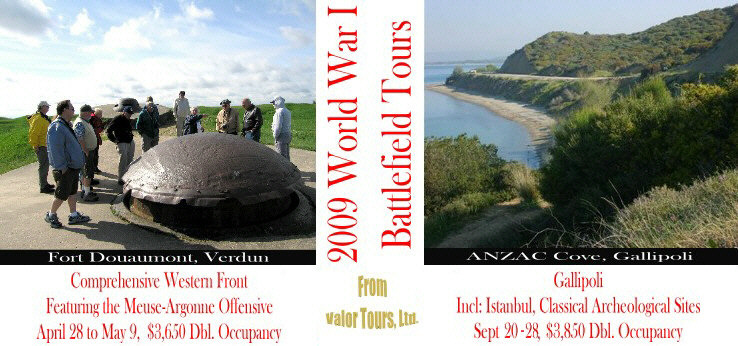







 Memorable Event
Memorable Event


